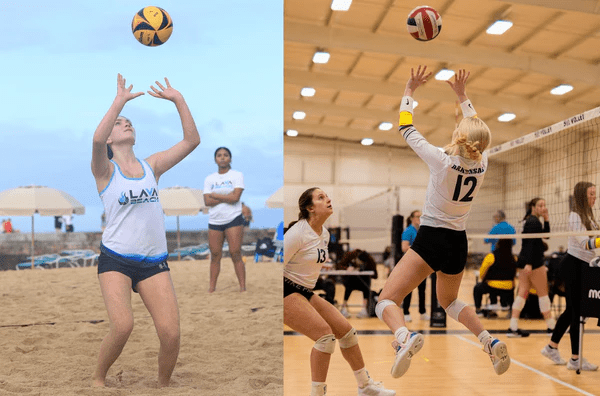If you’re organizing a volleyball match—whether it’s a professional tournament, school game, or casual backyard competition—setting up the correct volleyball net height is crucial. Proper net height not only ensures fairness and safety but also supports players in developing appropriate techniques based on age and skill level. From indoor courts to sandy beach setups, net height standards vary, and understanding these variations is essential for every coach, player, and equipment manager.
This guide offers a deep dive into volleyball net height standards across different formats, explains how to measure accurately, highlights common mistakes to avoid, and helps you select the right equipment for any scenario.
Why Volleyball Net Height Matters in Every Setting
The volleyball net serves as the central point of challenge in the game. A well-regulated net height ensures that matches are competitive, fair, and consistent across all levels of play.
Skill Development
When the net is set at the right height, players can practice hitting, setting, and blocking with appropriate body mechanics. This allows for proper muscle memory and reduced injury risk, especially in youth development.
Competition Compliance
In organized leagues and tournaments, net height must conform to international or national standards. A mismatch—even by a few centimeters—can disqualify a match or disrupt the flow of gameplay.
Player Confidence and Safety
Appropriately adjusted net height reduces frustration, especially among beginner or youth players, and encourages proper jumping and arm swing techniques.
Official Volleyball Net Height Standards
Volleyball net height is defined by the Fédération Internationale de Volleyball (FIVB), USA Volleyball, and other national associations. Standards vary based on age group, gender, and playing environment.
Indoor Volleyball Net Height
-
Men (15 years and older): 2.43 meters (7 feet 11 5/8 inches)
-
Women (15 years and older): 2.24 meters (7 feet 4 1/8 inches)
-
Boys (12–14 years): 2.24 meters
-
Girls (12–14 years): 2.13 meters (7 feet)
-
Youth (under 12): Typically ranges between 1.98–2.13 meters depending on skill and organization
Beach Volleyball Net Height
-
Men: 2.43 meters
-
Women: 2.24 meters
-
Co-Ed or Recreational: Generally 2.43 meters, but may be adjusted
-
Younger Players: Often set lower for accessibility
Sitting Volleyball
For athletes with physical impairments:
-
Men’s net height: 1.15 meters
-
Women’s net height: 1.05 meters
These measurements follow World ParaVolley regulations.
Adjusting Volleyball Net Height for Youth and Recreational Players
Net height must match a player’s age and physical development. If set too high, younger players may struggle to clear the net or develop improper technique. When training children or beginners:
-
Use adjustable pole systems
-
Begin with lower heights to build confidence
-
Gradually raise the net as skill improves
Custom net setups in backyards or school gyms often benefit from telescopic posts for this reason.
How to Measure Volleyball Net Height Accurately
Required Tools
-
A volleyball net height measuring stick or tape
-
A level (manual or laser)
-
Anchoring and tensioning equipment
Step-by-Step Setup
-
Center the net: Secure it evenly between the two poles
-
Check the middle height: Measure from the floor directly to the top of the net at the center
-
Confirm side measurements: Measure both ends of the net, which must not exceed the center height by more than 2 cm
-
Adjust as needed: Use the tension system to remove any sag
Consistency in measurement ensures the net conforms to regulations and plays evenly across the court.
Indoor vs. Outdoor Setup Considerations
Indoor Volleyball
-
Use anchored sleeves or floor plates
-
Check ceiling clearance (minimum 7 meters recommended)
-
Ensure the surface is level before finalizing height
Outdoor Volleyball
-
Poles should be anchored with stakes or weighted bases
-
Allow for environmental effects (wind, shifting sand or grass)
-
Use weather-resistant materials like powder-coated poles and UV-protected nets
The ability to adjust height is particularly useful outdoors, where terrain may not be perfectly level.
Common Mistakes in Net Height Setup
Avoid these frequent errors to maintain proper net setup:
1. Measuring from the Wrong Point
Always measure from the center of the net—tension can raise the sides slightly, so using post height is inaccurate.
2. Ignoring Net Sag
Without sufficient tension, the net may sag, especially at the center, resulting in an illegal height. Check all three main measurement points: center, left, and right ends.
3. Using Improper Equipment
Not all poles or nets are designed for adjustable or regulation play. Choose equipment that allows for correct height modifications.
Choosing the Right Volleyball Net System
When purchasing a volleyball net system, consider:
Durability
Choose steel or reinforced aluminum poles with rust resistance for longevity, especially for outdoor use.
Adjustability
Poles should offer clear markings and telescoping capability to easily set different regulation heights.
Portability
For mobile setups—like training camps or rec leagues—lightweight, collapsible poles and compact nets are ideal.
Certification
For school or league use, make sure the system is compliant with FIVB or USA Volleyball standards.
Training Tips for Adapting to Net Height
For Young Players
Start drills with lower nets and focus on proper footwork, swing form, and vertical jump development.
For Competitive Athletes
Use regulation-height nets consistently in practice. Incorporate resistance and jump-training exercises to build explosiveness.
For Coaches
Track player progress as net height increases, and maintain focus on injury prevention by teaching proper landing and jumping mechanics.
Conclusion: Precision in Net Height Leads to Better Performance
Understanding and setting the correct volleyball net height isn’t just about meeting technical rules—it’s about enhancing every aspect of the game. From improving skill acquisition to ensuring fair play, net height plays a critical role in volleyball at every level.
Whether you’re organizing a competitive league or helping young athletes develop, always prioritize accurate setup. With the right tools, equipment, and knowledge, you can ensure a better, safer, and more effective game experience for everyone on the court.












